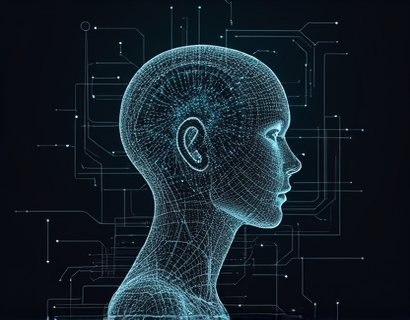AI-Driven Nanotech Learning: Transforming Education and Professional Development
The integration of Artificial Intelligence (AI) in the field of nanotechnology education marks a significant milestone in making complex scientific concepts accessible and engaging for learners of all ages. This article delves into the specialized insights provided by an AI-driven educational platform, designed to offer in-depth, verified information on nanotechnology, ensuring a safe and enriching experience for educators, professionals, and curious minds alike.
The platform's primary goal is to demystify nanotechnology, a field that deals with materials and devices on an atomic and molecular scale, typically between 1 to 100 nanometers. By leveraging AI, the platform can adapt to the varying levels of expertise among its users, providing tailored content that caters to both beginners and advanced learners. This adaptability is crucial in a field as intricate as nanotechnology, where foundational knowledge is essential before delving into more complex topics.
Content Verification and Reliability
One of the standout features of this AI-driven platform is its commitment to content verification. In an era where misinformation can spread rapidly, ensuring that the information provided is accurate and up-to-date is paramount. The platform employs rigorous verification processes, cross-referencing data from peer-reviewed journals, reputable academic institutions, and industry experts. This approach not only enhances the credibility of the platform but also builds trust among its users, who can rely on the information for educational purposes or professional development.
The AI algorithms are continuously updated and refined to incorporate the latest research and developments in nanotechnology. This ensures that the content remains current and relevant, addressing the dynamic nature of the field. For educators, this means having access to the most recent findings and methodologies, which can be directly integrated into their teaching materials. For professionals, it provides a valuable resource for staying abreast of industry trends and advancements.
Engaging and Interactive Learning Experiences
The platform is designed to be more than just a repository of information; it aims to create an engaging and interactive learning environment. Through an AI chat interface, users can ask questions, seek clarifications, and explore topics in real-time. This interactive feature is particularly beneficial for students who may have specific queries or need additional explanations on complex concepts. The chat interface is intuitive and user-friendly, making it accessible even for those who are not tech-savvy.
For educators, the AI chat can serve as a valuable tool for lesson planning and classroom discussions. By interacting with the AI, teachers can gain insights into the most effective ways to present nanotechnology concepts, along with suggestions for hands-on activities and experiments that can be conducted in the classroom. This not only enhances the learning experience for students but also helps educators stay innovative and engaged in their teaching practices.
Child-Friendly Mode: Ensuring Safe and Educational Interactions
Recognizing the importance of early exposure to STEM fields, the platform includes a child-friendly mode designed specifically for young learners. This mode simplifies complex concepts into age-appropriate language, using visuals, animations, and interactive elements to make learning fun and engaging. The content is carefully curated to align with educational standards and curricula, ensuring that children receive a solid foundation in nanotechnology without being overwhelmed by technical jargon.
Safety is a top priority in this child-friendly mode. The platform employs strict moderation and filtering to ensure that all interactions are secure and appropriate for children. Parents and guardians can rest assured that their children are engaging with educational content that is both safe and enriching. The child-friendly mode also includes parental controls, allowing adults to monitor and manage their children's learning experience.
AI Chat Interface: A Personalized Learning Companion
The AI chat interface is a cornerstone of the platform, serving as a personalized learning companion for users. This chatbot is equipped with advanced natural language processing capabilities, enabling it to understand and respond to a wide range of queries and commands. Whether a user is asking for a definition of a specific term, seeking explanations of nanotechnology applications, or looking for recommendations on further reading, the AI chat provides concise and accurate responses.
For professionals, the AI chat can be a valuable resource for networking and collaboration. Users can ask about industry trends, potential job opportunities, and emerging research areas. The AI can also suggest relevant conferences, workshops, and online courses, helping professionals stay connected with the broader nanotechnology community. This personalized approach ensures that each user receives tailored information that aligns with their interests and career goals.
Interdisciplinary Approach: Bridging Nanotechnology with Other Fields
Nanotechnology is inherently interdisciplinary, intersecting with fields such as biology, chemistry, physics, and engineering. The AI-driven platform reflects this by providing content that bridges these disciplines, offering a holistic view of how nanotechnology can be applied across various industries. For educators, this means having access to a comprehensive resource that can be integrated into interdisciplinary curricula, fostering a more well-rounded understanding of nanotechnology's potential and impact.
The platform includes modules that explore the intersection of nanotechnology with other fields, such as nanomedicine, nanoelectronics, and environmental nanotechnology. These modules are designed to highlight real-world applications and case studies, making the learning experience more relatable and practical. For professionals, this interdisciplinary approach can inspire innovative solutions and new research directions, driving advancements in their respective fields.
Assessment and Feedback Mechanisms
To ensure that learners are effectively grasping the material, the platform incorporates assessment and feedback mechanisms. These tools help users gauge their understanding of nanotechnology concepts and identify areas that require further study. The AI chat can generate quizzes, flashcards, and interactive assessments tailored to the user's level and learning objectives.
Feedback is immediate and constructive, providing users with insights into their strengths and weaknesses. For educators, these assessment tools can be used to track student progress and adjust teaching strategies accordingly. The platform also offers detailed reports for educators, summarizing class performance and highlighting topics that may need additional attention. This data-driven approach enhances the overall learning experience and supports continuous improvement.
Community and Collaboration Features
Building a community around nanotechnology education is essential for fostering collaboration and knowledge sharing. The platform includes features that facilitate connections among users, such as discussion forums, group projects, and collaborative research initiatives. These features are designed to encourage users to share their insights, ask questions, and engage in meaningful discussions.
For educators, the community aspect provides a platform to collaborate with peers, exchange teaching resources, and participate in professional development opportunities. The AI chat can assist in moderating these discussions, ensuring that the community remains a positive and productive space. For students and professionals, being part of a vibrant community can enhance their learning experience and open doors to new opportunities.
Accessibility and Inclusivity
Inclusivity is a core value of the platform, with a strong focus on making nanotechnology education accessible to a diverse audience. The platform is designed to be user-friendly for individuals with varying levels of technical proficiency, ensuring that everyone can benefit from the resources offered. For users with disabilities, the platform adheres to web accessibility standards, providing alternative text for images, keyboard navigation, and screen reader compatibility.
Additionally, the platform offers content in multiple languages, breaking down language barriers and making nanotechnology education accessible to a global audience. This inclusivity is crucial in promoting diversity and equity in STEM fields, encouraging underrepresented groups to explore and contribute to the field of nanotechnology.
Conclusion
The integration of AI in nanotechnology education represents a transformative shift, making this complex and fascinating field more accessible and engaging for learners of all ages. Through verified content, interactive learning experiences, and a focus on safety and inclusivity, the platform empowers educators, professionals, and curious minds to explore the wonders of nanotechnology. As the field continues to evolve, this AI-driven educational tool will remain at the forefront, providing reliable and innovative resources to support the next generation of nanotechnology leaders.










































